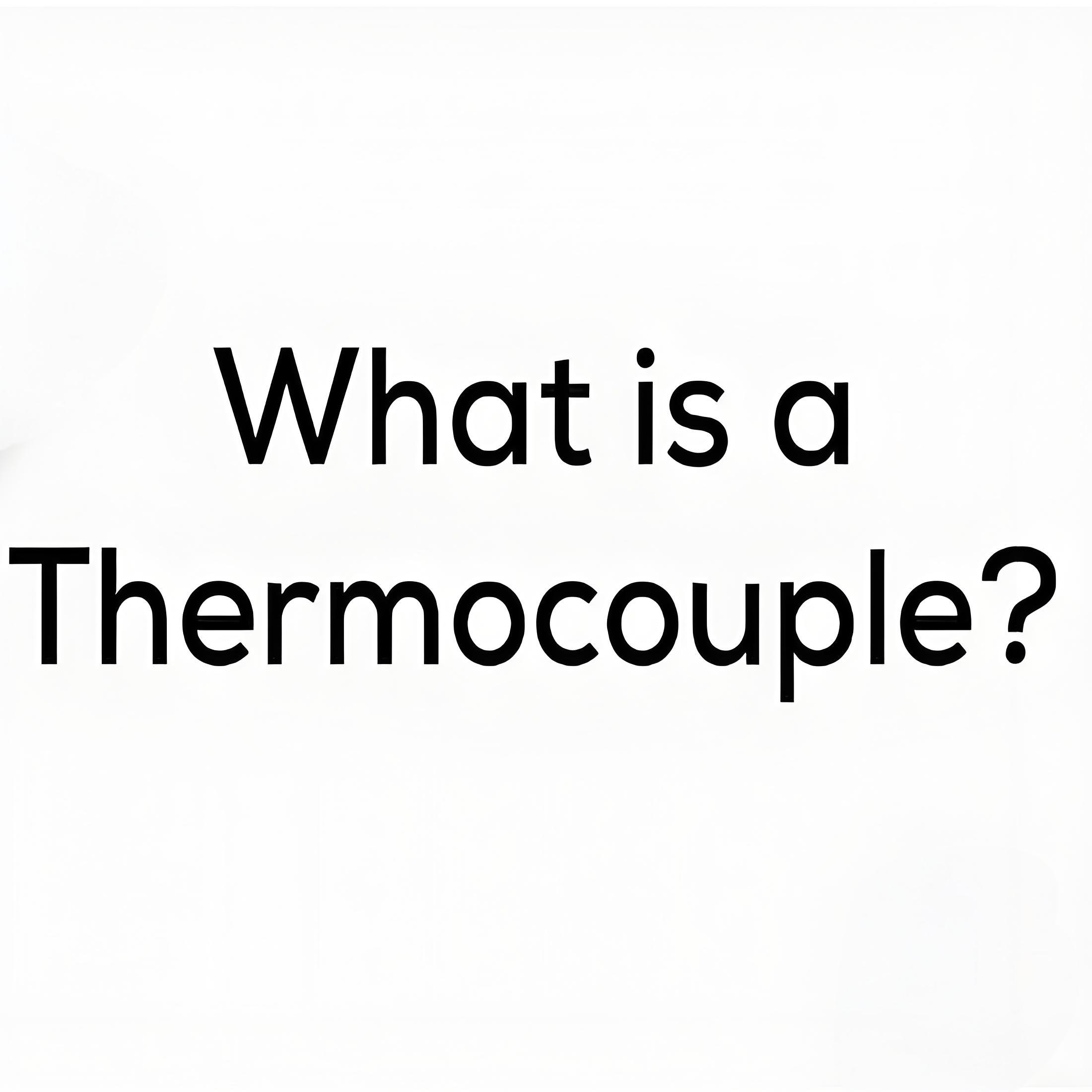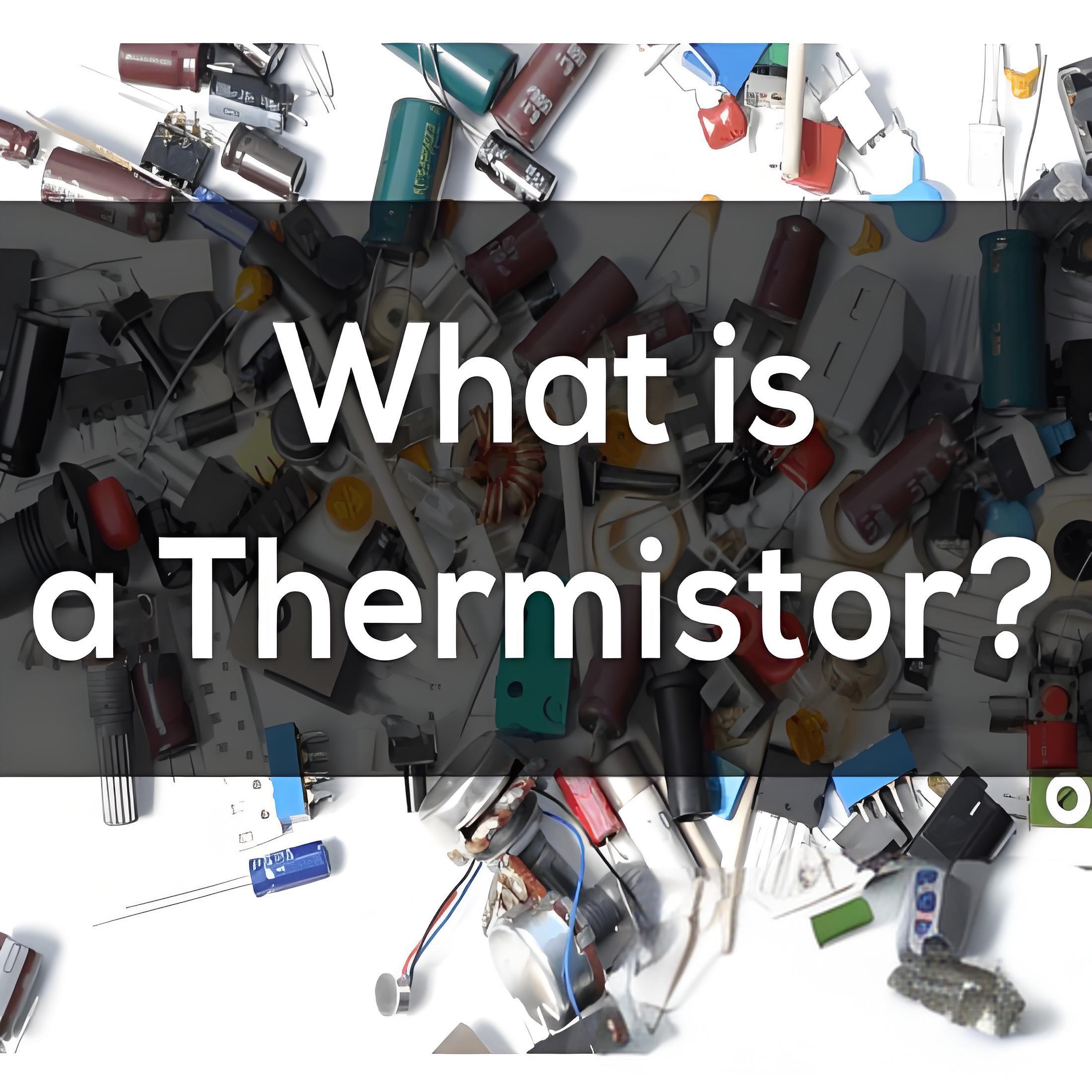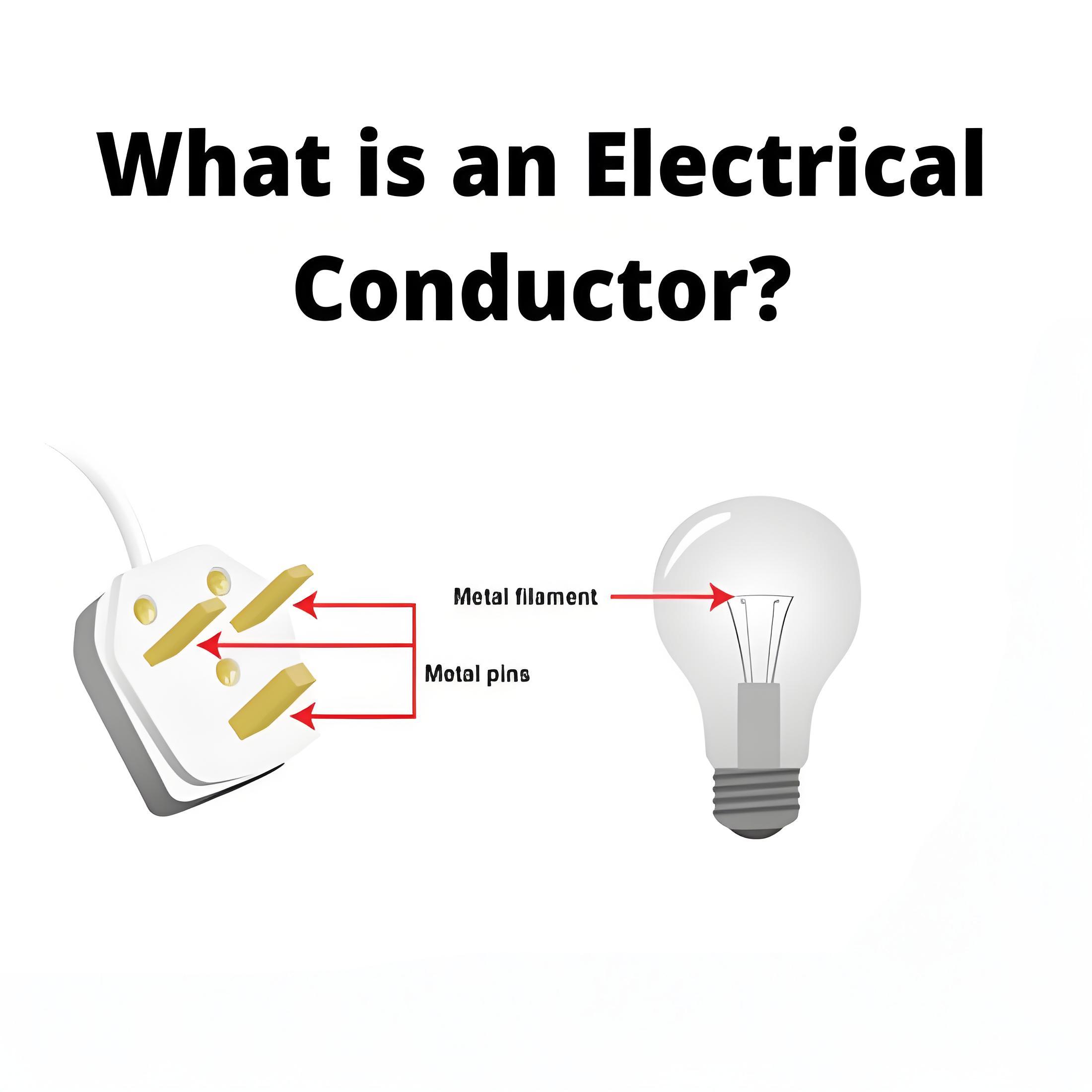How Dose an LED Work?
How Dose an LED Work?
LED Definition
An LED, or Light Emitting Diode, is defined as a semiconductor device that emits light when electrically energized through a process called electroluminescence.
How an LED works
Like an ordinary diode, the LED diode works when it is forward biased. In this case, the n-type semiconductor is heavily doped than the p-type forming the p-n junction. When it is forward biased, the potential barrier gets reduced and the electrons and holes combine at the depletion layer (or active layer), light or photons are emitted or radiated in all directions. A typical figure blow showing light emission due electron-hole pair combining on forward biasing.
The emission of photons in an LED is explained by the energy band theory of solids, which dictates that light emission depends on the material’s band gap being direct or indirect. Those semiconductor materials which have a direct band gap are the ones that emit photons. In a direct bandgap material, the bottom of the energy level of conduction band lies directly above the topmost energy level of the valence band on the Energy vs Momentum (wave vector ‘k’) diagram.
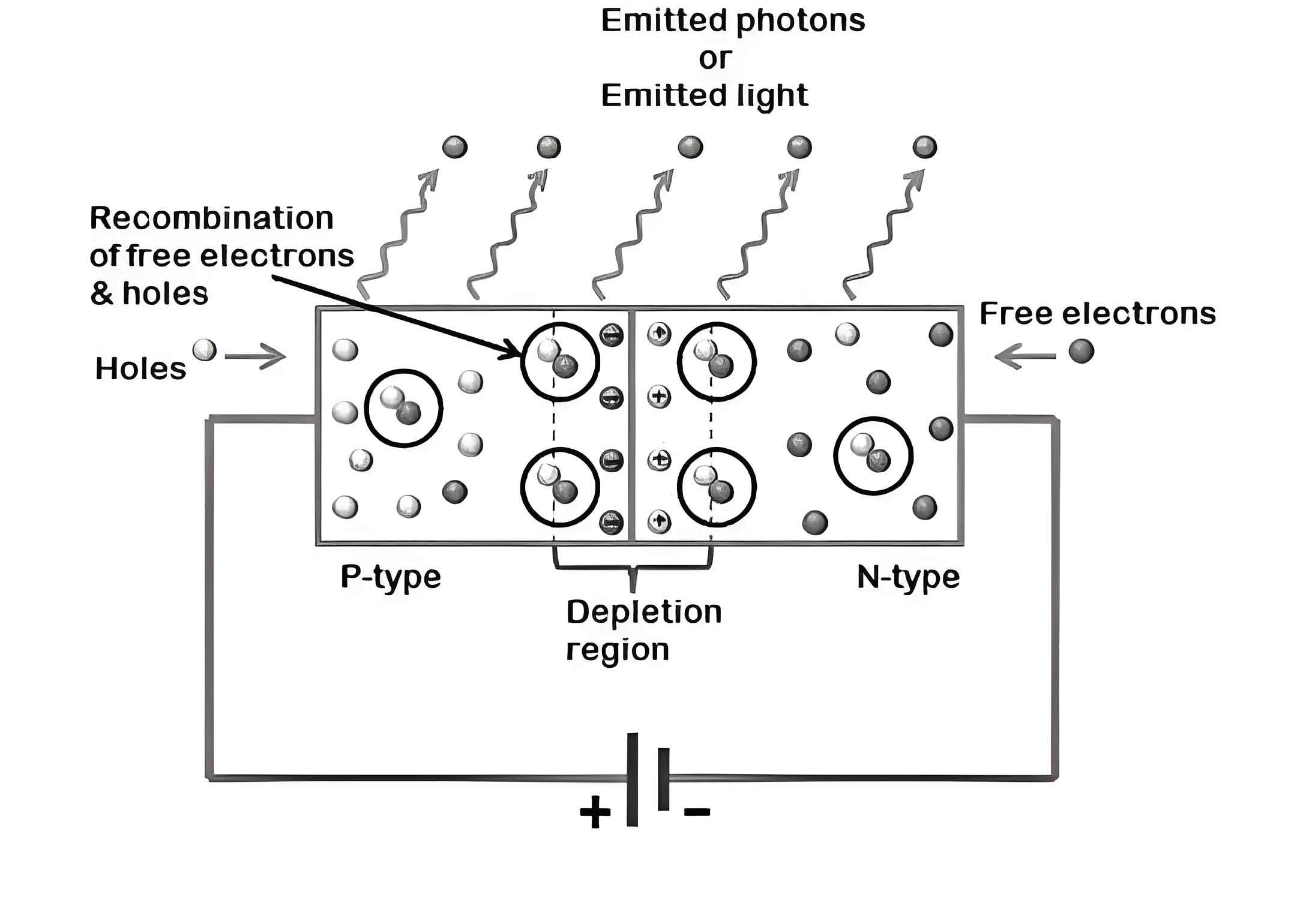
When electrons and hole recombine, energy E = hν corresponding to the energy gap △ (eV) is escaped in the form of light energy or photons where h is the Planck’s constant and ν is the frequency of light.
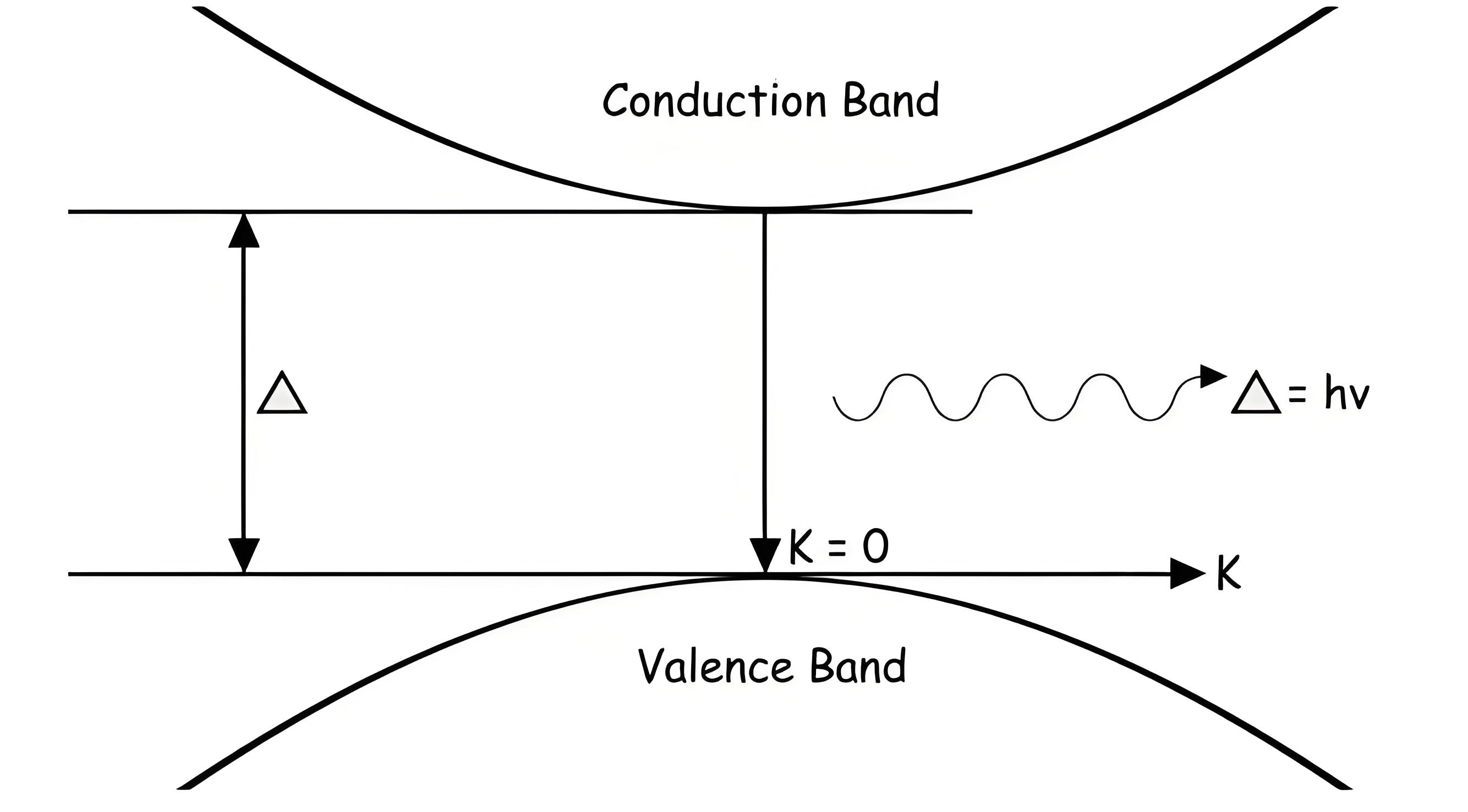
Direct Band Gap
Indirect band gap materials are non-radiative, as their conduction band’s bottom does not align with the valence band’s top, converting most energy into heat. Examples are Si, Ge etc.
Indirect Band Gap
Example of material which has direct band gap is Gallium Arsenide(GaAs), a compound semiconductor which is the material used in LEDs. Dopant atoms are added to GaAs to give out a wide range of colors. Some of the materials used in LEDs are:
Aluminium Gallium Arsenide(AlGaAs) – infrared.
Gallium Arsenic Phosphide(GaAsP) – red, orange, yellow.
Aluminium Gallium Phosphide(AlGaP) – green.
Indium gallium nitride (InGaN) – blue, blue-green, near UV.
Zinc Selenide(ZnSe) – blue.
Physical Structure of LED
LED is structured in such a way so that light emitted does not get reabsorbed into the material. So it is ensured that the electron-hole recombination takes place on the surface.
The above figure shows the two different ways of structuring LED p-n junction. The p-type layer is made thin and is grown on the n-type substrate. Metal electrodes attached on either side of the p-n junction serve as nodes for external electrical connection. The Light emitting diode p-n junction is encased in a dome-shaped transparent case so that light is emitted uniformly in all directions and minimum internal reflection to take place.
The larger leg of LED represents the positive electrode or anode.
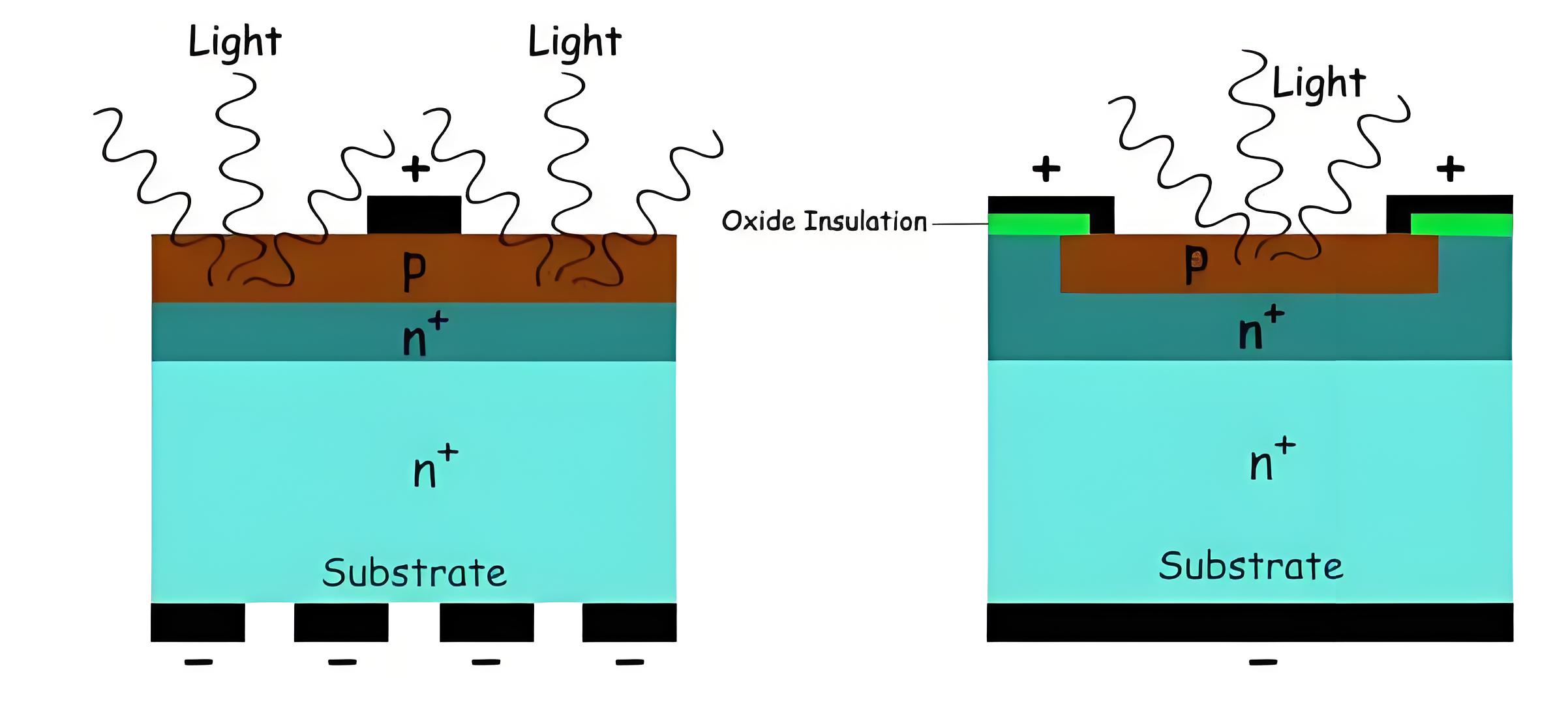
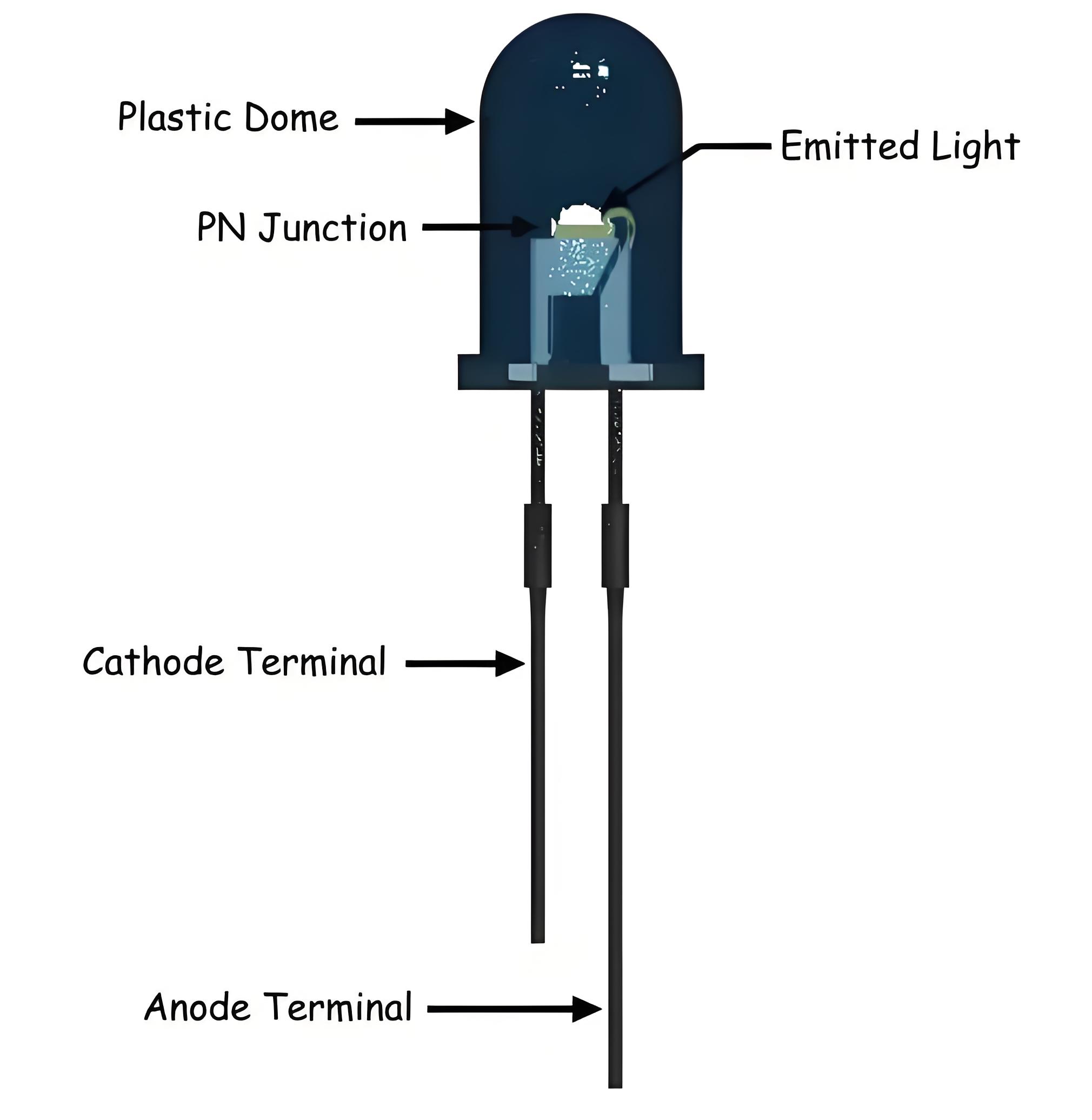
LEDs with more than 2 legs are also available such as 3, 4 and 6 pin configurations to obtain multi-colors in the same LED package. Surface mounted LED displays are available that can be mounted on the PCBs.
LEDs typically require a current of a few tens of milliamps and need high resistance in series due to their higher forward voltage drop of 1.5 to 3.5 volts, compared to ordinary diodes.
White Light LEDs or White LED Lamps
LED lamps, bulbs, street lighting are becoming very popular these days because of the very high efficiency of LEDs in terms of light output per unit input power(in milliWatts), as compared to the incandescent bulbs. So for general purpose lightings, white light is preferred. To produce white light with the help of LEDs, two methods are used :
Mixing of three primary colors RGB to produce white light. This method has high quantum efficiency.
The other method is coating an LED of one color with phosphor of a different color in order to produce white light. This method is commercially popular to manufacture LED bulbs and lightings.
Applications of LEDs
Electronic displays such as OLEDs, micro-LEDs, quantum dots etc.
As an LED indicator.
In remote controls.
Lightings.
Opto-isolators.
Welcome to our electricity community! Established to facilitate the exchange and cooperation in the electricity industry and bridge professionals, enthusiasts, and related enterprises.


